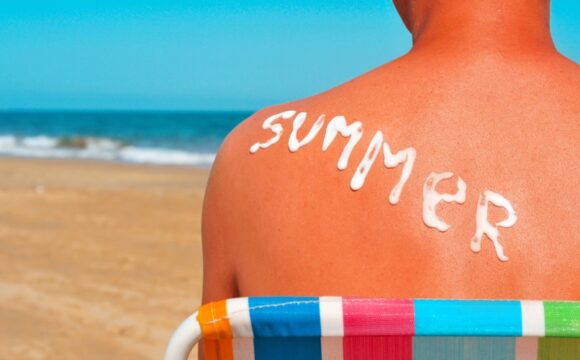Show of hands—how many of us have ever gotten too much sun? (Just the waving of those countless hands provides a cooling breeze!) Even though we long for the hot, sultry days of summer when we’re caught in winter’s deep freeze, we also know our skin is vulnerable when the July sun is at its peak.
There are three types of heat-related conditions to be aware of—heat cramps are the mildest, followed by heat exhaustion, and life-threatening heatstroke. And then, there’s always sunburn to prevent!
Heat Cramps
Heat cramps occur when your body’s core temperature cannot cool itself by sweating, often due to strenuous exercise or over-exertion in heat and humidity. Symptoms include heavy sweating, exhaustion, thirst, and muscle cramps. When treated quickly—drinking fluids or sports drinks with electrolytes and resting in air-conditioning or shade—heat cramps can be prevented from becoming heat exhaustion.
Heat Exhaustion
In addition to weather or exercise, heat exhaustion can also be caused by becoming dehydrated, drinking too much alcohol (it can affect temperature regulation), or overdressing.
Risk factors for heat exhaustion:
- High humidity doesn’t allow sweat to evaporate easily
- Body temperature regulation isn’t fully developed in infants and children under 4
- In adults over 65, body temperature may be affected by illness or medications.
- Medications for blood pressure or a heart condition, allergies, tranquilizers, or antipsychotics could affect body temperature or allow sufficient hydration.
- Obesity impacts body temperature
- Sudden temperature changes from a cooler climate to a hotter one
Heatstroke
If heat exhaustion isn’t treated and your body’s temperature reaches 104 or higher, heat exhaustion becomes heatstroke. Seek medical attention immediately! Your brain and organs can be permanently damaged, which could result in death.
Preventing Heatstroke
- Wear loose, lightweight clothing
- Wear sunscreen
- Stay hydrated
- Don’t leave anyone in a parked car
- Avoid strenuous activity in hot weather as much as possible
- If you’re at risk due to medications or previous history, act quickly if symptoms appear.
Sunburn
 Sunburn is caused by excess ultraviolet (UV) radiation. Studies of long-haul truck drivers show that the left side of their faces, which are more exposed to the sun, have more signs of aging than the right. Avoid sunburn by wearing SPF-15 or higher broad-spectrum sunscreen —apply 30 minutes before sun exposure and reapply sunscreen every two hours. If you’re swimming or heavily sweating, you need to reapply it right after. Wear a wide-brimmed hat and sunglasses. Even a first-degree burn can cause future skin cancer because sun damage is cumulative—increasing the cancer risk with each occurrence.
Sunburn is caused by excess ultraviolet (UV) radiation. Studies of long-haul truck drivers show that the left side of their faces, which are more exposed to the sun, have more signs of aging than the right. Avoid sunburn by wearing SPF-15 or higher broad-spectrum sunscreen —apply 30 minutes before sun exposure and reapply sunscreen every two hours. If you’re swimming or heavily sweating, you need to reapply it right after. Wear a wide-brimmed hat and sunglasses. Even a first-degree burn can cause future skin cancer because sun damage is cumulative—increasing the cancer risk with each occurrence.
Four types of sunburn:
- 1st degree—red, dry skin, painful to touch, heals in 3–6 days
- 2nd degree—painful and possibly blistering, the top two layers of the skin are affected, heals in 7–21 days
- 3rd degree—blisters and scarring, could take longer than 21 days to heal
- 4th degree—all layers are affected, possibly even fat/muscle, skin turns color and requires hospitalization and/or surgery
While severe sunburn requires medical attention, milder cases can be treated at home.
- Cool baths or showers
- Moisturizer with aloe vera or actual gel from an aloe plant
- Over-the-counter hydrocortisone cream (not benzocaine-type products, which could irritate the skin)
- Aspirin or ibuprofen for swelling and discomfort
- Drink extra water to prevent dehydration
- Do not pop blisters! They help to heal the skin and prevent infection
- Cover up when you go outside to protect the affected area
If you or a loved one have a heat-related condition or a severe sunburn, don’t wait—contact your physician, walk-in clinic, or emergency room for treatment.
Protect Your Eyes From the Sun Too!
Did you know your eyes can actually get sunburned? Excessive exposure to UV rays have short- and long-term consequences to your sight, which can be prevented.
Related sun protection information from Glenwood Family Eye Center: 6 Tips to Protect Your Eyes from Dangerous UV Rays – and the Effects if You Don’t.


